The growing trend towards electrification in the automotive industry has sparked interest in electric vehicles (EVs) and hybrid models as they present attractive alternatives to traditional gasoline engines. In this article, we will compare two notable SUVs: the Audi Q6 e-tron and the Volvo XC60. Both vehicles incorporate advanced technologies and offer impressive performance, but they cater to different audiences. Let’s dive into the technical aspects and innovative features of both models.
Audi Q6 e-tron vs Volvo XC60 – Differences & prices compared
Everyday use, family trips or long-distance drives – here’s where the differences show.
Discover whether Audi Q6 e-tron or Volvo XC60 fits your lifestyle better.
Design and Dimensions
The Audi Q6 e-tron boasts a sleek and modern design, characterized by its bold lines and aerodynamic profile. It measures 4771 mm in length, 1939 mm in width, and stands 1685 mm tall, which gives it a commanding road presence. The trunk capacity ranges from 499 to 526 liters, depending on the configuration, making it practical for daily use.
In contrast, the Volvo XC60 is slightly smaller, measuring 4688 mm in length, 1902 mm in width, and 1658 mm in height. While it offers a slightly inferior trunk capacity of 468 to 483 liters, the XC60 balances its design with a luxurious Scandinavian aesthetic, renowned for its comfort and utility.
Powertrains and Performance
The Audi Q6 e-tron is equipped with an all-electric powertrain, offering configurations with up to 516 HP and 855 Nm of torque. It features a dual-motor all-wheel-drive option, allowing for swift acceleration from 0-100 km/h in just 4.3 seconds. With battery capacity options of 75.8 kWh to 94.9 kWh, the Q6 e-tron has an impressive electric range of up to 637 km, setting it apart in the EV market.
On the other hand, the Volvo XC60 offers both petrol mild-hybrid and plug-in hybrid options, with power outputs ranging from 250 HP to 455 HP. The XC60 accelerates from 0-100 km/h in as little as 4.9 seconds for the top trim. However, its maximum electric range is limited to just 80 km, significantly shorter than that of the Q6 e-tron. Both models feature automatic transmissions, enhancing driving convenience and efficiency.
Efficiency and Sustainability
When it comes to energy consumption, the Audi Q6 e-tron shines with a consumption rate of 15.6 to 18.9 kWh/100 km, which underscores its efficiency as an electric vehicle. This translates into zero CO2 emissions, solidifying its position as a more sustainable option.
Conversely, the Volvo XC60 showcases a mixed fuel consumption, ranging from 7.7 L/100 km for its petrol engine to an impressive 0.9 L/100 km when utilizing its electric capabilities. However, its CO2 emissions can reach up to 174 g/km, depending on the engine choice, placing it at a disadvantage in terms of environmental impact compared to the all-electric Q6 e-tron.
Technological Innovations
Both vehicles come equipped with the latest technological advancements to enhance the driving experience. The Audi Q6 e-tron features the brand’s proprietary MMI touchscreen system, with seamless smartphone integration, augmented reality navigation, and a suite of advanced driver assistance systems (ADAS) that provide enhanced safety and convenience.
On the flip side, the Volvo XC60 champions safety and driver engagement with its sophisticated Pilot Assist system, which helps with steering, acceleration, and braking during highway driving. The vehicle also includes a large center display and integration with Google services, providing users with real-time information and connectivity.
Conclusion
In summation, the Audi Q6 e-tron and Volvo XC60 represent two distinct approaches to the modern SUV market. The Q6 e-tron is ideal for those seeking an all-electric vehicle with extended range, impressive performance, and cutting-edge technology. Meanwhile, the XC60 appeals to buyers looking for a versatile SUV that combines hybrid capabilities with Volvo's focus on safety and luxury.
Ultimately, your choice between these two would depend on your priorities—whether it be the efficiency and zero-emission benefits of the Audi Q6 e-tron or the hybrid flexibility and safety features of the Volvo XC60. Either way, both models exemplify how automakers are innovating to meet the evolving demands of the automotive landscape.
Here’s where it gets real: The technical differences in detail
Costs and Efficiency:
Price and efficiency are key factors when choosing a car – and this is often where the real differences emerge.
Volvo XC60 has a slightly advantage in terms of price – it starts at 49200 £, while the Audi Q6 e-tron costs 54400 £. That’s a price difference of around 5237 £.
As for range, the Audi Q6 e-tron performs clearly better – achieving up to 656 km, about 574 km more than the Volvo XC60.
Engine and Performance:
Under the bonnet, it becomes clear which model is tuned for sportiness and which one takes the lead when you hit the accelerator.
When it comes to engine power, the Audi Q6 e-tron has a to a small extent edge – offering 516 HP compared to 455 HP. That’s roughly 61 HP more horsepower.
In acceleration from 0 to 100 km/h, the Audi Q6 e-tron is to a small extent quicker – completing the sprint in 4.30 s, while the Volvo XC60 takes 4.90 s. That’s about 0.60 s faster.
In terms of top speed, the Audi Q6 e-tron performs evident better – reaching 230 km/h, while the Volvo XC60 tops out at 180 km/h. The difference is around 50 km/h.
There’s also a difference in torque: Audi Q6 e-tron pulls somewhat stronger with 855 Nm compared to 709 Nm. That’s about 146 Nm difference.
Space and Everyday Use:
Whether family car or daily driver – which one offers more room, flexibility and comfort?
Both vehicles offer seating for 5 people.
In curb weight, Volvo XC60 is somewhat lighter – 1900 kg compared to 2200 kg. The difference is around 300 kg.
In terms of boot space, the Audi Q6 e-tron offers barely noticeable more room – 526 L compared to 483 L. That’s a difference of about 43 L.
In maximum load capacity, the Volvo XC60 performs barely noticeable better – up to 1543 L, which is about 14 L more than the Audi Q6 e-tron.
When it comes to payload, Volvo XC60 hardly perceptible takes the win – 550 kg compared to 540 kg. That’s a difference of about 10 kg.
Who comes out on top?
Overall, the Audi Q6 e-tron shows itself to be is largely superior and secures the title of DriveDuel Champion.
It convinces with the more balanced overall package and proves to be the more versatile choice for everyday use.
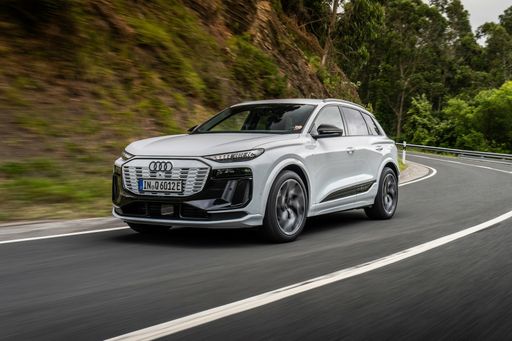 @ Audi AG
@ Audi AG
Audi Q6 e-tron
Audi Q6 e-tron
The Audi Q6 e-tron represents a significant step forward in the realm of electric vehicles, offering a perfect blend of cutting-edge technology and timeless design. With its spacious interior and advanced infotainment system, it provides both comfort and connectivity for the modern driver. The Q6 e-tron embodies Audi's commitment to sustainability without compromising on performance or luxury.
details @ Audi AG
@ Audi AG
 @ Audi AG
@ Audi AG
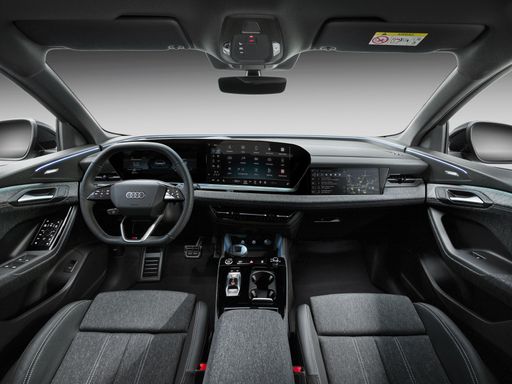 @ Audi AG
@ Audi AG
Volvo XC60
The Volvo XC60 blends Scandinavian calm with confident presence, offering a cabin that feels plush without shouting for attention. It’s a smart pick for buyers after a composed ride, clever practicality and thoughtful safety touches — it even makes running the family shuttle feel almost serene, which is a small miracle.
details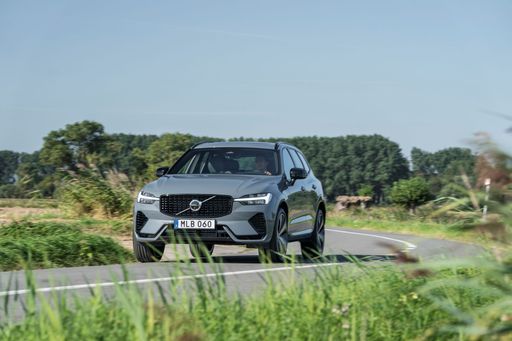 @ Volvo Cars
@ Volvo Cars
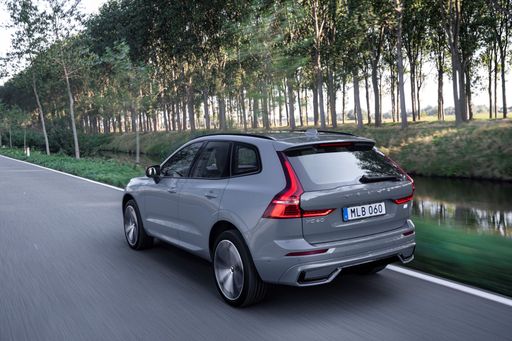 @ Volvo Cars
@ Volvo Cars
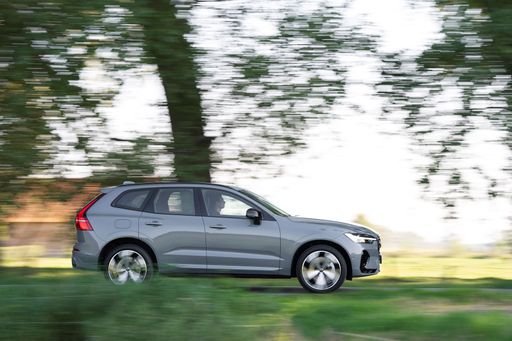 @ Volvo Cars
@ Volvo Cars
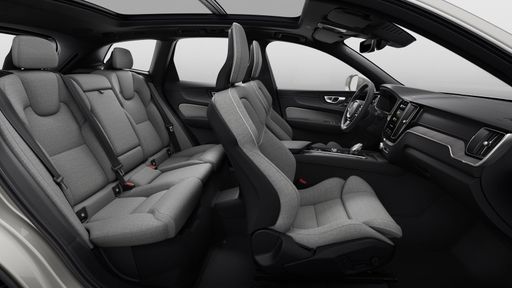 @ Volvo Cars
@ Volvo Cars
 @ Volvo Cars
@ Volvo Cars
 @ Audi AG
@ Audi AG
|
 @ Volvo Cars
@ Volvo Cars
|
|
|
|
Costs and Consumption |
|
|---|---|
|
Price
54400 - 91900 £
|
Price
49200 - 75100 £
|
|
Consumption L/100km
-
|
Consumption L/100km
2.8 - 7.5 L
|
|
Consumption kWh/100km
15.6 - 18.9 kWh
|
Consumption kWh/100km
-
|
|
Electric Range
482 - 656 km
|
Electric Range
74 - 82 km
|
|
Battery Capacity
75.8 - 94.9 kWh
|
Battery Capacity
14.70 kWh
|
|
co2
0 g/km
|
co2
64 - 169 g/km
|
|
Fuel tank capacity
-
|
Fuel tank capacity
71 L
|
Dimensions and Body |
|
|---|---|
|
Body Type
SUV
|
Body Type
SUV
|
|
Seats
5
|
Seats
5
|
|
Doors
5
|
Doors
5
|
|
Curb weight
2200 - 2425 kg
|
Curb weight
1900 - 2150 kg
|
|
Trunk capacity
499 - 526 L
|
Trunk capacity
468 - 483 L
|
|
Length
4771 mm
|
Length
4708 mm
|
|
Width
1939 - 1965 mm
|
Width
1902 mm
|
|
Height
1665 - 1685 mm
|
Height
1651 - 1655 mm
|
|
Max trunk capacity
1361 - 1529 L
|
Max trunk capacity
1528 - 1543 L
|
|
Payload
540 kg
|
Payload
510 - 550 kg
|
Engine and Performance |
|
|---|---|
|
Engine Type
Electric
|
Engine Type
Petrol MHEV, Plugin Hybrid
|
|
Transmission
Automatic
|
Transmission
Automatic
|
|
Transmission Detail
Reduction Gearbox
|
Transmission Detail
Automatic Gearbox
|
|
Drive Type
Rear-Wheel Drive, All-Wheel Drive
|
Drive Type
All-Wheel Drive
|
|
Power HP
252 - 516 HP
|
Power HP
250 - 455 HP
|
|
Acceleration 0-100km/h
4.3 - 7.6 s
|
Acceleration 0-100km/h
4.9 - 6.9 s
|
|
Max Speed
210 - 230 km/h
|
Max Speed
180 km/h
|
|
Torque
450 - 855 Nm
|
Torque
350 - 709 Nm
|
|
Number of Cylinders
-
|
Number of Cylinders
4
|
|
Power kW
185 - 380 kW
|
Power kW
184 - 335 kW
|
|
Engine capacity
-
|
Engine capacity
1969 cm3
|
General |
|
|---|---|
|
Model Year
2024 - 2025
|
Model Year
2025
|
|
CO2 Efficiency Class
A
|
CO2 Efficiency Class
F, B
|
|
Brand
Audi
|
Brand
Volvo
|
What drivetrain options does the Audi Q6 e-tron have?
Available configurations include Rear-Wheel Drive or All-Wheel Drive.
The prices and data displayed are estimates based on German list prices and may vary by country. This information is not legally binding.
